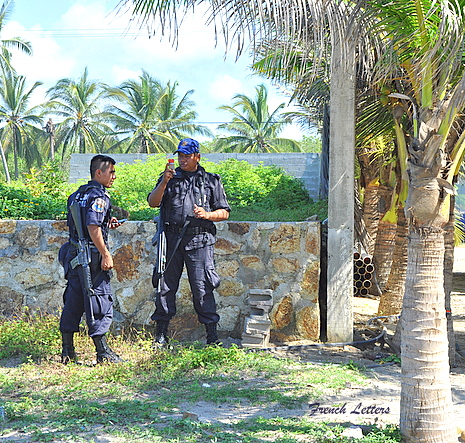Now is the moment, so seize it! Chanterelles are everywhere, and this is a fabulous way to use them. You’ll definitely astound your guests with this treat. I’m not going to say there’s no effort involved, but it’s oh so worth it.
This cappuccino was part of a French dinner party I did the other night.
One of my favorite moments is a party waiting to happen. That moment when all the prep is done, in this case three days’ worth, the table awaits the guests, and there’s a minute to take a deep breath. In this case I breathed that breath twenty whole minutes before our friends arrived, which is a record for me. I’m usually doing something right until the last 5 minutes, when I hurriedly dress and swat at my hair. Fortunately, I know that no one comes over to look at me, they have eyes only for the food, and that’s just the way I like it.
This meal began with a pretty little starter of peppers and shallots, layered with minted goat cheese,
and finished with David Lebovitz’ s wonderful Pear and Almond Tart. You should make this tart soon and often, and be sure to make your own poached pears according to his recipe.
In between there were beef cheeks and vegetables and cheese, but for me, the real star was the chanterelle cappuccino. I don’t have a picture of this, so you’ll just have to trust me. Get out your prettiest coffee cups and serve this as a starter for a classic autumn meal. Personally, I’m making it again tomorrow, while the chanterelles are at their peak. It’s really fabulous.
Cappuccino of Chanterelles *
10 oz chanterelle caps, after stems are removed
5 oz heavy cream
2 large shallots, diced
3 cups chicken broth, preferably homemade
2 T duck fat, or neutral oil
a small pinch of cinnamon
1 cup of unsweetened cream, whipped
a pinch of unsweetened cocoa powder
Remove stems form the chanterelles, saving them for making stock if you like. Brush and wipe the mushrooms carefully with a mushroom brush or a paper towel, removing all traces of dirt and pine needles.
Chop up the chanterelles a bit and sauté them with the shallots in the duck fat (and it’s really worth seeking out some duck fat for this recipe). When all is tender, add the chicken broth, the cinnamon, pepper, salt if your broth is unsalted, and the 5 oz of cream, reduce heat to very low, and simmer the soup for 10 minutes.
Let the soup cool a bit, then purée it with an immersion blender or in the food processor until it’s very smooth. Then comes the only hard part. You need to rub the soup through a chinois or a very fine sieve so that none of the chunks get into the soup. You will have a lot of solids left, but keep pressing them as long as you can stand to, because the texture will get more velvety if you get a little bit of the sieved solids into the broth. Save the solids for another use (I tossed an egg and a T of coconut flour into them and fried up some tasty little pancakes with mine). It’s fine to do this the day before and just reheat your soup when you’re ready to serve it.
At serving time, whip a cup of heavy cream to soft peaks. Pour the barely warm soup into small coffee cups, top each cup with a cloud of whipped cream, and sprinkle on a tiny bit of cocoa powder. Stand by to be delighted.
* lightly adapted from this recipe.


































































































































































